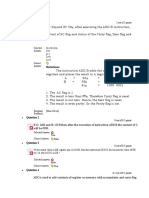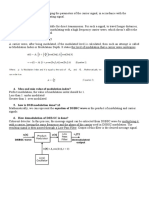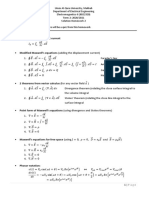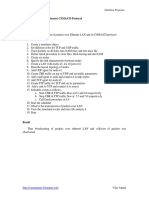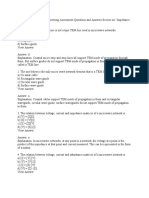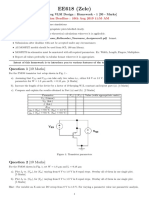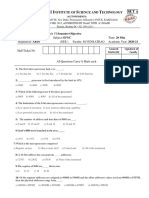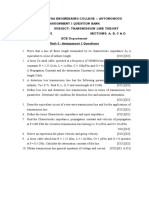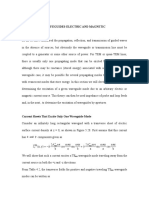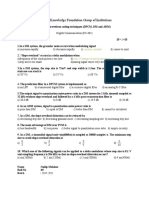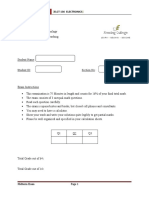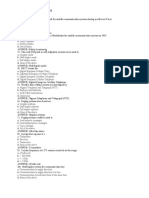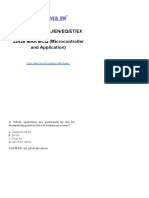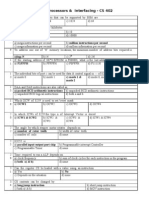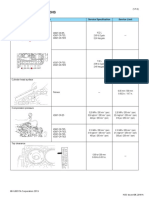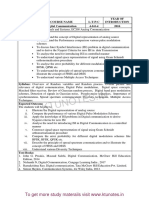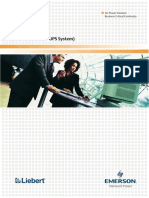100% found this document useful (2 votes)
944 views8 pagesMcqs On Microcontroller
The document contains 20 multiple choice questions and answers about the operations and functionality of microcontrollers. It covers topics like bit manipulating instructions, control signals for accessing off-chip devices, registers for storing ALU output, stack pointer operations, effects on the program counter, default stack value after reset, program status word bank selection, on-chip RAM reservation, addressing off-chip memory, interrupt processing location, serial port interrupt generation, timer/counter mode selection, and baud rate specification.
Uploaded by
niteshCopyright
© © All Rights Reserved
We take content rights seriously. If you suspect this is your content, claim it here.
Available Formats
Download as DOCX, PDF, TXT or read online on Scribd
100% found this document useful (2 votes)
944 views8 pagesMcqs On Microcontroller
The document contains 20 multiple choice questions and answers about the operations and functionality of microcontrollers. It covers topics like bit manipulating instructions, control signals for accessing off-chip devices, registers for storing ALU output, stack pointer operations, effects on the program counter, default stack value after reset, program status word bank selection, on-chip RAM reservation, addressing off-chip memory, interrupt processing location, serial port interrupt generation, timer/counter mode selection, and baud rate specification.
Uploaded by
niteshCopyright
© © All Rights Reserved
We take content rights seriously. If you suspect this is your content, claim it here.
Available Formats
Download as DOCX, PDF, TXT or read online on Scribd
/ 8

